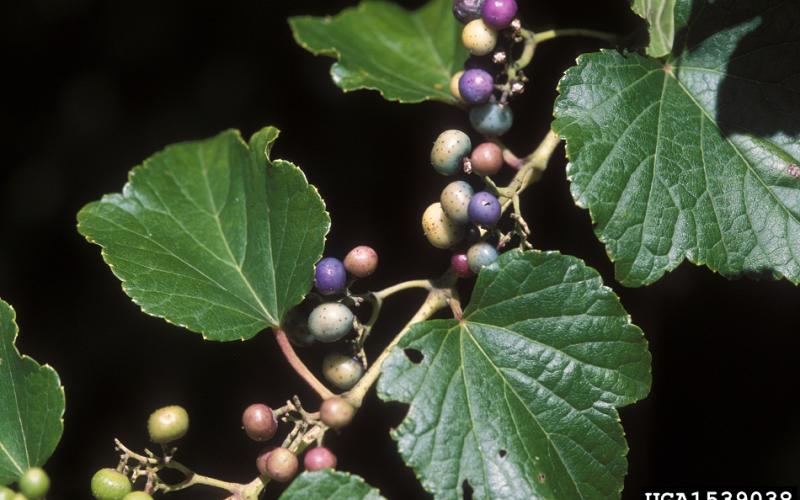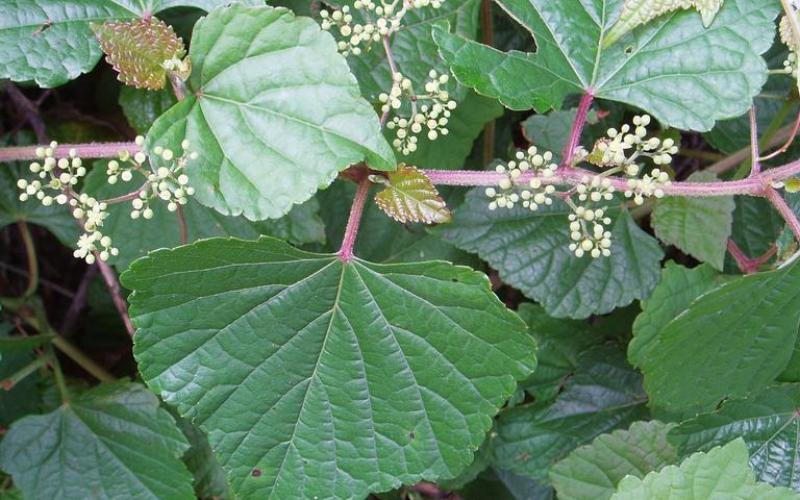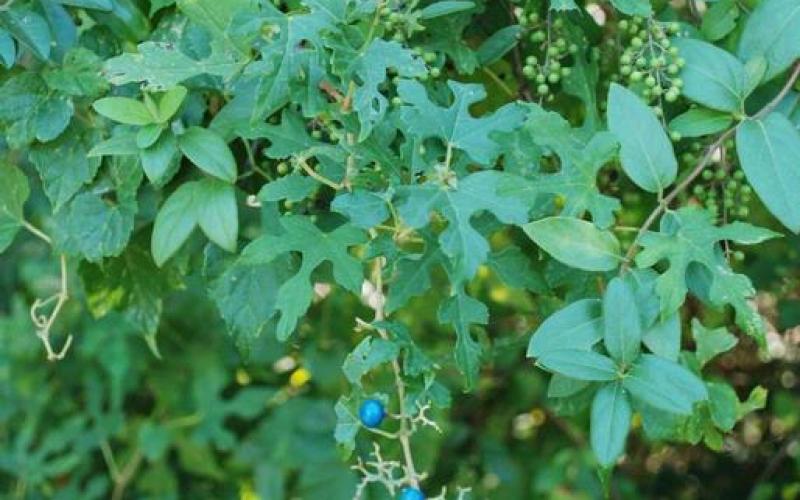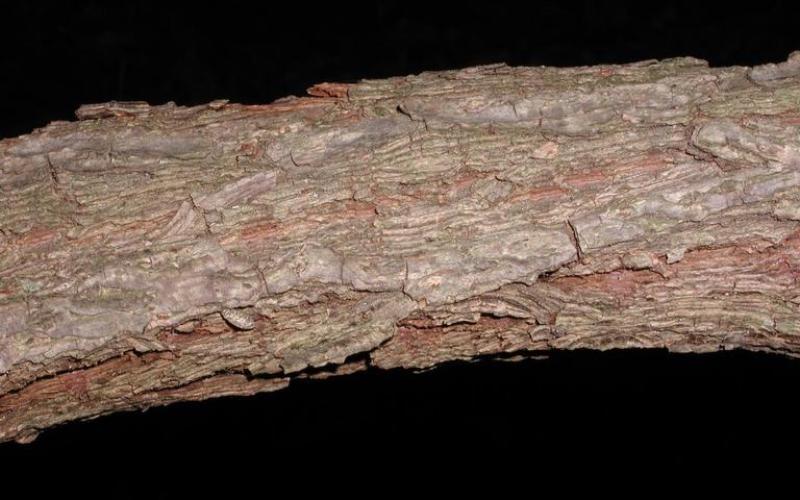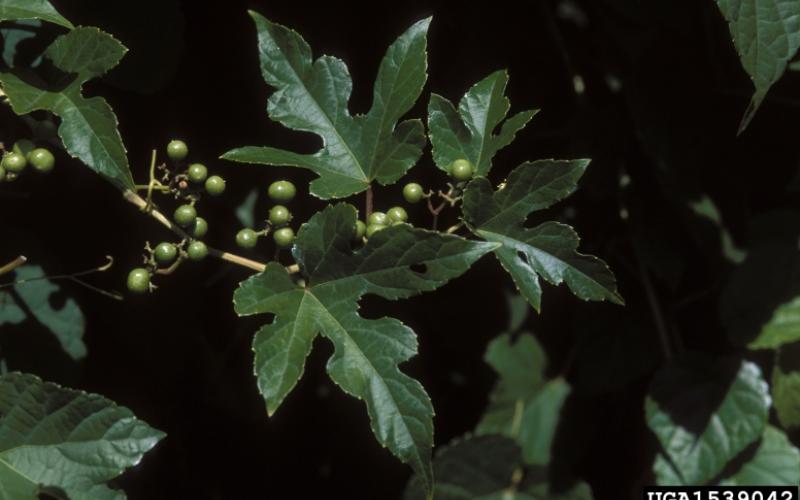Common Name: Porcelain berry
Scientific Name: Ampelopsis brevipedunculata (Maxim.) Trautv.
Synonyms: Porcelainberry, amur peppervine
Legal Status
Propagation and sale of this plant are prohibited in Minnesota. Transportation is only allowed when in compliance with Minnesota Statute 18.82. Although Restricted Noxious Weeds are not required to be controlled or eradicated by law, landowners are strongly encouraged to manage these invasive plants on their properties in order to reduce spread into new areas.
Background
Porcelain berry is native to Asia and was introduced to the U.S. in the 1870s as an ornamental landscape plant. This vine is widespread in the eastern U.S. and some Midwestern states. In recent years, it has been found in a few scattered locations in Minnesota, Wisconsin, and Iowa.
Description
- Porcelain berry is a perennial, woody vine in the grape family (Vitaceae). It resembles wild grapevine, climbs via tendrils, and grows to 15- 20 feet.
- Leaves are alternate and simple, with coarsely-toothed margins. Leaves can be either heart-shaped or deeply lobed with 3-5 divisions, depending on location along stem. The undersides of the leaves and new wood have small hairs.
- Flowers are tiny, greenish-white, and borne on umbrella-shaped cymes which face upwards.
- Fruit is a distinctive speckled berry, with widely variable coloring ranging from blue, pink, purple, and cream. Berries are borne on long panicles, and each berry holds 2-4 seeds.
- The stem pith is white and the bark has lenticels (small spots), and does not peel or shred—both good ways to distinguish it from wild grape.
Habitat
Porcelain berry grows well in a wide variety of soil types, especially thriving in forest edges, thickets, river and pond banks, and woodland openings. It is not tolerant of heavily shaded areas such as mature forest interiors, instead preferring full to partial sun.
Means of spread and distribution
This vine readily spreads by seed; birds and other animals are attracted by the fruit and will spread it long distances. The seeds germinate after natural or human disturbance. It can also spread vegetatively by resprouting from roots, especially in response to cutting above-ground vines.
Porcelain berry is widespread on the East Coast and has become a particular problem in the southeastern states. It is slowly spreading westward. It has been found in scattered places in recent years in Minnesota, Wisconsin, and Iowa.
Impact
Porcelain berry overtakes other vegetation and can shade out native shrubs and trees. It can form thick monocultures which reduce species diversity and wildlife habitat.
Prevention and management
- Once established, porcelain berry vines are difficult to control. For all management options, infestation sites will need to be monitored and treated repeatedly until the seedbanks are depleted and eradication can be confirmed.
- Do not plant porcelain berry. Pull any young vines by hand and be sure to remove the entire root. Do not spread soil that contains any root sections. If the plants are pulled while in fruit, they should be bagged and destroyed.
- Mature vines can be controlled with either foliar or cut-stem herbicide applications. Make sure to cut and treat vines before they go to seed. For specific herbicide recommendations, contact your University of Minnesota Regional Extension Educator.
